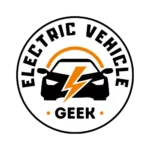One of the primary factors before purchasing an electric vehicle (EV) is its range; consumers normally check the range to see if it will suit their daily commute.
The electric vehicle’s range is important when installing a home EV charger because it will help you choose a charger that suits you.
Electric Vehicle Range
The range of an electric vehicle (EV) refers to the maximum distance it can travel on a single battery charge. It is typically measured in miles or kilometers. The range is influenced by factors such as the battery capacity, the efficiency of the vehicle, driving conditions, and weather.
For example, suppose an electric vehicle has a range of 250 miles. In that case, it means that, under ideal conditions, the vehicle can travel up to 250 miles on a fully charged battery before recharging. However, the range may vary based on real-world driving conditions, such as speed, terrain, temperature, and accessories like air conditioning.
One factor that prevents potential EV owners from purchasing an EV is the worry that the EV will not be able to reach its destination. This phenomenon is called EV anxiety, and it also affects current EV owners who suffer from EV Range anxiety and, currently, due to reliability issues of public EV chargers, “charging or charger anxiety. “
EV Range Anxiety
EV range anxiety is the fear that your EV will not have enough power to reach your destination. When driving,. It kicks in when you notice an empty signal light on your electric vehicle dashboard, indicating that your battery capacity is low and insufficient for the journey.
EV Charge Anxiety.
Charge anxiety is a growing concern in electric vehicle (EV) adoption, distinct from range anxiety. As EV technology advances, anxiety has shifted from doubts about driving range to uncertainties surrounding charge point accessibility and reliability.
This emotional barrier encompasses concerns about encountering long queues at charging stations, damaged or non-functional equipment, and unreliable software or hardware.
The worry extends to finding charging spots occupied by traditional fossil fuel vehicles. Unlike range anxiety, charge anxiety focuses not only on the location of charging stations but also on the dependability of the charging infrastructure, influencing perceptions and decisions related to EV ownership.
How To Prevent EV Range Anxiety.
We always recommend installing a home EV Charger to prevent EV range anxiety. The home charger should be fast enough to cover your day-to-day commute and an extra 30% if you live in cold climates where the temperature drops close to zero; this is because when temperatures drop below zero, your EV could lose as much as 35% of its range, according to research on Winter & Cold Weather EV Range.
The reason we recommend charging at home is that you will have access and control of your EV charging sessions, making sure you can replenish your battery, which helps with range confidence; other ways to overcome range anxiety include improving your driving skills (Regenerative Braking), maintaining your EV (Every 7,500 miles check for parts wear and tear, rotate tires, and check fluids), and always planning your EV charging sessions and trips (EV Preconditioning).
Having your EV Charger is important since there are fewer public charging stations. Of the ones available, 25% are unusable due to broken connectors, network failures, payment system failures, and unresponsive screens.
Tailoring Your Home EV Charger to Your Lifestyle
According to J. D. Power’s report on EV ownership, electric car range is the most important factor in customer satisfaction. For Home EV Charger installation, your EV range helps determine the charger you need to install in your home.
Electric Car Range Comparison
When selecting an electric vehicle home charger, aligning your charging habits with your specific driving habits and intended use is crucial.
Consider whether you’ll primarily use the EV for daily commutes, shuttling the kids to various activities, or embarking on long-distance journeys and whether the speed of the EV charger is enough to replenish your battery to cover your commute. Each scenario can significantly influence which Home EV charger best suits your needs.
A common query during the EV shopping process is, “What is the range of an electric car on a single charge?” Answering this question will help you find a Home EV Charger that perfectly matches your lifestyle and ensures seamless integration into your daily routine.
Below is an electric car range comparison table and the type of charger the car uses:
| EV Make | EV Model | EPA Range (mi) | EV Charger |
|---|---|---|---|
| Lucid | Air GT | 516 | Connector: Type 2 (AC) / CCS (DC) AC Charging Capacity: 22 kW DC Charging Capacity: 250 kW (or 300 kW) |
| Lucid | Air GT Performance | 446 | Connector: Type 2 (AC) / CCS (DC) AC Charging Capacity: 22 kW DC Charging Capacity: 250 kW (or 300 kW) |
| Lucid | Air Touring* | 425 | |
| Lucid | Air Pure AWD* | 410 | |
| Tesla | Model S | 405 | |
| Rivian | R1T Dual Max* | 400 | |
| Tesla | Model S Plaid | 396 | |
| Tesla | Model 3 Long Range | 358 | |
| Tesla | Model X | 351 | |
| Mercedes | EQS 450+ Sedan | 350 | |
| Mercedes | EQS 450 4Matic | 340 | |
| Mercedes | EQS 580 4Matic | 340 | |
| Tesla | Model X Plaid | 333 | |
| Tesla | Model Y Long Range | 330 | |
| GMC | Hummer EV | 329 | |
| Rivian | R1T Quad Large | 328 | |
| BMW | iX x50 | 324 | |
| Rivian | R1S Quad Large | 321 | |
| Ford | F150 Lightning XLT Extended | 320 | |
| BMW | i7 x60 | 318 | |
| Tesla | Model 3 Performance | 315 | |
| Cadillac | Lyriq RWD | 312 | |
| Kia | EV6 | 310 | |
| Ford | Mach-E Prem ER | 310 | |
| Mercedes | EQE* | 305 | |
| Mercedes | EQS 450+ SUV | 305 | |
| Nissan | Ariya LR FWD | 304 | |
| Hyundai | IONIQ 5 RWD | 303 | |
| Tesla | Model Y Performance | 303 | |
| BMW | i4 e40 | 301 | |
| Ford | Mach-E Prem ER AWD | 290 | |
| Nissan | Ariya LR AWD | 289 | |
| BMW | iX m60 | 288 | |
| Mercedes | EQS 450 4Matic SUV | 285 | |
| Mercedes | EQS 580 4Matic SUV | 285 | |
| Kia | EV6 AWD | 282 | |
| Genesis | G80 | 282 | |
| Porsche | Taycan Plus | 282 | |
| Mercedes | AMG EQS 53 | 277 | |
| VW | ID.4 | 275 | |
| Tesla | Model 3 RWD | 272 | |
| Porsche | Taycan 4S Plus | 272 | |
| BMW | i4 M50 | 271 | |
| Polestar | 2 FWD | 270 | |
| Ford | Mach-E GT | 270 | |
| Hyundai | IONIQ 5 AWD | 266 | |
| Audi | Q4 e-Tron | 265 | |
| Polestar | 2 AWD | 260 | |
| Rivian | R1T Dual Standard* | 260 | |
| Rivian | R1S Dual Standard | 260 | |
| Ford | Mach-E GT Performance | 260 | |
| Chevrolet | Bolt | 259 | |
| Hyundai | Kona | 258 | |
| BMW | i4 e35 | 256 | |
| VW | ID.4 AWD | 255 | |
| Kia | Niro | 253 | |
| Toyota | BZ4X | 252 | |
| Genesis | GV60 | 248 | |
| Chevrolet | Bolt EUV | 247 | |
| Ford | Mach-E Select RWD | 247 | |
| Jaguar | I-PACE | 246 | |
| Porsche | Taycan GTS | 246 | |
| Mercedes | EQB | 243 | |
| Porsche | Taycan | 242 | |
| Audi | Q4 e-Tron AWD | 241 | |
| Ford | F150 Lightning Pro | 240 | |
| Porsche | Taycan Turbo | 238 | |
| Audi | e-Tron GT | 236 | |
| Genesis | GV60 Performance | 235 | |
| Porsche | Taycan 4 CrossTurismo | 235 | |
| Porsche | Taycan 4S | 235 | |
| Porsche | Taycan GTS SportTurismo | 233 | |
| Porsche | Taycan Turbo CrossTurismo | 233 | |
| Audi | e-Tron RS GT | 232 | |
| Porsche | Taycan 4S CrossTurismo | 230 | |
| Toyota | BZ4X AWD | 228 | |
| Subaru | Solterra | 228 | |
| Volvo | C40 Recharge | 226 | |
| Audi | e-Tron | 226 | |
| Audi | e-Tron Sportback | 225 | |
| Ford | Mach-E Select AWD | 224 | |
| Volvo | XC40 Recharge | 223 | |
| Porsche | Taycan Turbo S | 222 | |
| Porsche | Taycan Turbo S CrossTurismo | 222 | |
| Hyundai | IONIQ 5 SR RWD | 220 | |
| Nissan | Leaf SV Plus | 212 | |
| Nissan | Ariya SR FWD | 212 | |
| Audi | e-Tron S Sportback | 212 | |
| VW | ID.4 SR | 209 | |
| Audi | e-Tron S | 208 | |
| Kia | EV6 GT | 206 | |
| Nissan | Leaf S | 149 | |
| Mini | Cooper SE | 114 | |
| Mazda | MX30 | 100 |
What Factors Affect the Range of an EV?
Highlighted below are some of the factors that affect EV range
- Speed: EVs shine in city driving due to regenerative braking, but highway speeds drain the battery faster. Consider your typical driving speed when choosing an EV.
- Weather: Cold temperatures reduce battery capacity and require climate control use, impacting range. Adapt your driving habits based on weather conditions.
- Charging: EVs don’t charge to 100% to preserve battery life. Rapid charging often stops at 80%. Plan your charging strategy for longer trips.
- Battery Age: Batteries degrade slowly (2.3% per year), but warranties provide peace of mind. Expect some range loss over time.

James Ndungu is a certified EV charger installer with over five years of experience in EVSE selection, permitting, and installation. He holds advanced credentials, including certification from the Electric Vehicle Infrastructure Training Program (EVITP) and specialized training in EV charging equipment and installation, as well as diplomas in EV Technology and Engineering Fundamentals of EVs. Since 2021, James has tested dozens of EV chargers and accessories, sharing expert insights into the latest EV charging technologies.







